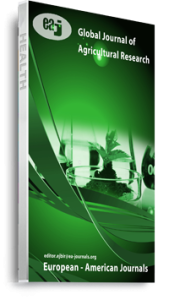The present study was conducted to identify and document WEPs of the study area and the associated ethnobotanical knowledge of local communities of Liben and Wadera Districts of Guji Zone, in Southern Ethiopia. Ethnobotanical data were collected using key informant interview, focus group discussions, semi-structured interviews, guided field observations and local market surveys. A total of 60 respondents were selected for semi-structured interviews by means of simple random sampling methods. A total of 54 wild edible plant species belonging to 45 genera and 32 families were identified and documented. The growth habits of the identified WEPs of the study area were trees (57.4%), shrubs (29.6%), herbaceous (9.3%) and climbers (3.7%). The frequently WEPs parts used of the study Districts were found to be fruits (87%), tubers (9%), roots (2%) and root barks (2%) respectively. In terms of indigenous knowledge on WEPs with respect to the age of the respondents, the older have high indigenous knowledge on the WEPs names, uses and plant parts used but the youngest have very little indigenous knowledge on WEPs. Based on the findings of this study, the species preference is difference among the two study Districts. Therefore, Syzygium guineense, Pappea capensis, Carissa spinarum, Cordia africana and Rytigynia neglecta were the preferred WEPs of Wadera District. While, Mimusops kummel, Carissa spinarum, Rhus natalensis, Pappea capensis and Grewia bicolor were the preferred WEPs of the Liben District. WEPs of the study Districts are mainly harvested and consumed during dry season, wet season and year round and the most frequent gatherers are children and youngsters. Based on the market surveys conducted in the two study Districts, fruits of four WEPs such as Mimusops kummel, Syzygium guineense, Ficus sur and Flacourtia indica were reported to be sold and can provide additional income to the local communities. The present study found that WEPs in the study area were threatened by anthropogenic factors including expansions of agricultural land, fuel wood collection, un controlled fire setting, timber production, cutting for construction and over grazing. Therefore, along with sustainable utilization and conservation of the existing WEPs of the study area, priority should be given on urgent collection, domestication and cultivation of the most threatened WEPs such as Cordia africana, Mimusops kummel, Syzygium guineense, Carissa spinarum and Pappea capensis.
Citation: Aschalew Emire, Sintayo Demise,Temesgen Giri and Wakeyo Tadele (2022) Ethnobotanical Study of Wild Edible Plants in Liben and Wadera Districts of Guji Zone, Southern Ethiopia, Global Journal of Agricultural Research , Vol.10, No.3, pp.47-65
Keywords: Preference, marketability, threat factors and wild edible plants

